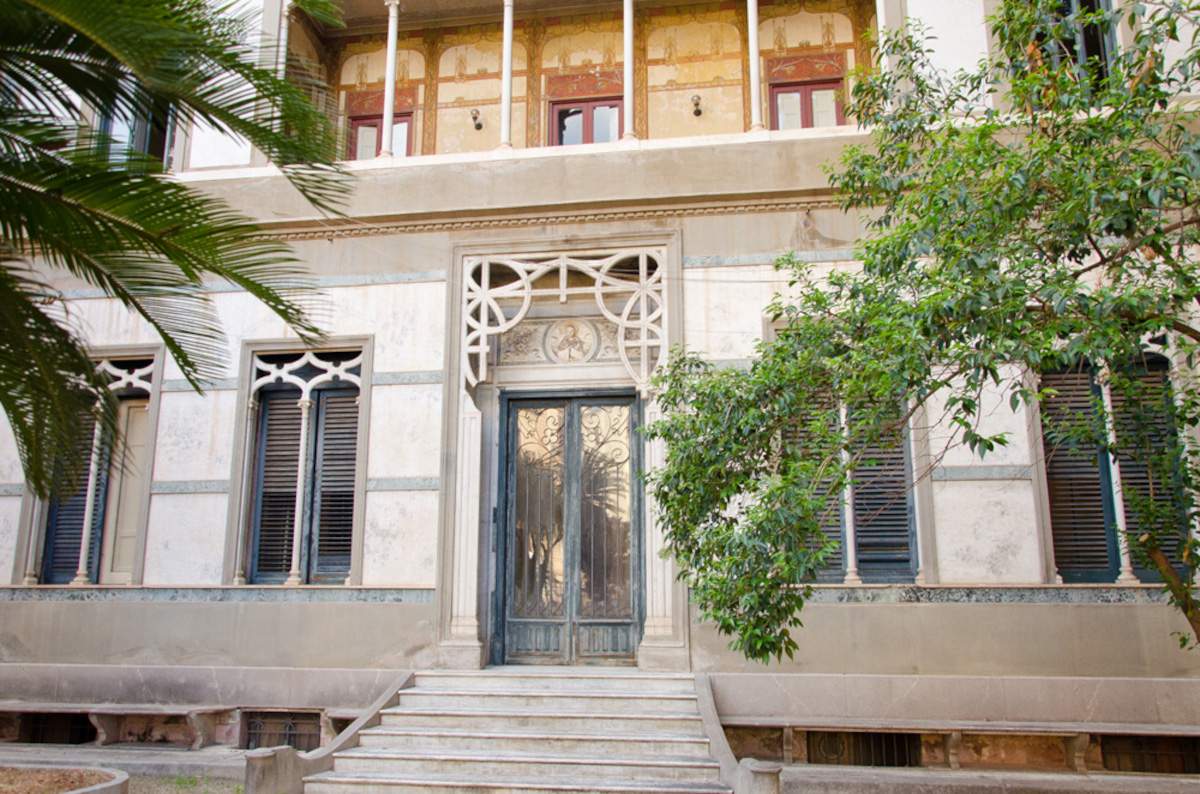Palermo, after more than two decades Villino Favaloro reopens to house regional museum of photography
In Palermo, the Villino Favaloro reopens after more than 20 years and becomes home to the Regional Museum of Photography, which will be open to the public starting Tuesday, March 26. The Villino located in Piazza Virgilio was built between 1889 and 1891 to a design by Giovan Battista Filippo Basile as a meeting point between late medieval and Renaissance styles in a balanced stylistic synthesis of the architect’s experimental tendencies. The mosaic panels on the upper floor and in the Pompeian room are likely the work of Carmelo Giarrizzo; the Art Nouveau manners and formulas, on the other hand, date back to some interventions in 1903 by Ernesto Basile, the same man who in 1914 carried out the Villino’s expansion with the construction of the belvedere tower. The interior pictorial decorations and mosaics were made by Salvatore Gregorietti.
The renovation project was overseen by the Regional Center for Inventory, Cataloging and Documentation, to the tune of 1.7 million euros from the 2014/2020 “Culture and Development” Pon. A second intervention borne by the “Culture and Development” Pon, to the tune of more than 900 thousand euros, also made it possible to take care of the multimedia and immersive set-up, entrusted to Vodafone Business and ETT, in order to integrate and enhance the exhibition system.
The musealization of part of the Center’shistorical photographic archive was carried out, selecting the most representative and artistically valuable assets: negatives and positives on plate and film dating from between 1854 and 1970; albums belonging to families of the Sicilian aristocracy and upper middle class, including the Florios; and photographic equipment from the late 19th century. The Center has curated content dedicated to various themes: history of photographic techniques, photographers of the Grand Tour, photography between naturalism and pictorialism, the history of portraiture, the great Sicilian photographers, and photographic documentation related to industrial development and agrarian reform.
An app with text and images will lead the visitor to an understanding of the tour route along the mezzanine and second floor; several exhibits with art walls, interactive touchscreens, and virtual reconstructions will then allow the visitor to travel through time through the photographic shots of Sommer, Sevaistre, Incorpora, Interguglielmi, Benedetto and Eugenio Bronzetti, and the Seffers, thus overcoming the static mode and passive contemplation of the exhibits.
“This architectural jewel in the heart of the city returns to be the heritage of all,” said Sicilian Regional President Renato Schifani, “becoming a museum of itself, a stop on an ideal itinerary of Art Nouveau that represents an all-Palermitan peculiarity. But that’s not all: Villino Favaloro becomes a custodian of history, housing precious images that reconstruct more than a century of our Island.”
“An architectural work of great value, an essential stage of the Art Nouveau itinerary in Palermo, is finally returned to public enjoyment,” added the Councilor for Cultural Heritage and Sicilian Identity Francesco Paolo Scarpinato, “and the right enhancement is ensured to the photographic collections of the Regional Center for Inventory, Cataloguing and Documentation, in a permanent exhibition capable of narrating the history of photography in Sicily and the cultural memory of the Region.”
The Regional Museum of Photography will open to the public, starting Tuesday, March 26, Tuesday through Saturday from 9 a.m. to 1 p.m., last admission at 12:15 p.m.; special openings on the first and third Sundays of the month. Tickets (for 2024): full 2 euros, reduced 1 euro. Access is also free or reduced, according to regional regulations.
 |
| Palermo, after more than two decades Villino Favaloro reopens to house regional museum of photography |
Warning: the translation into English of the original Italian article was created using automatic tools. We undertake to review all articles, but we do not guarantee the total absence of inaccuracies in the translation due to the program. You can find the original by clicking on the ITA button. If you find any mistake,please contact us.



























